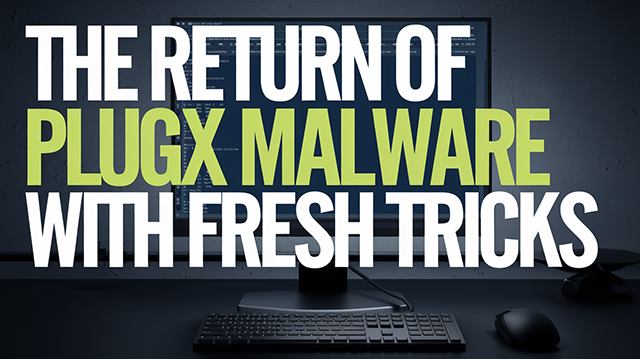The Return of PlugX Malware with Fresh Tricks

Threat Group: Likely associated with Chinese Advanced Persistent Threat (APT) groups
Threat Type: Remote Access Trojan (RAT)
Exploited Vulnerabilities: Multiple, including spear-phishing and exploiting unpatched software vulnerabilities
Malware Used: PlugX
Threat Score: High (8.7/10) – Due to its versatility, stealth capabilities, and association with espionage campaigns
Last Threat Observation: January 16, 2025
Overview
PlugX is a sophisticated Remote Access Trojan (RAT) that has been used in cyber-espionage campaigns since its discovery in 2008. It is commonly attributed to Chinese APT groups, such as APT41 and Mustang Panda, due to its use in targeted attacks against government agencies, critical infrastructure, defense contractors, and other high-value targets. The malware is modular, allowing attackers to customize its functionality for different objectives, including data exfiltration, system reconnaissance, and persistence.
PlugX is typically delivered via spear-phishing emails containing malicious attachments or links. It exploits vulnerabilities in widely used software or employs social engineering tactics to trick victims into execution. The malware remains a persistent threat due to its continual evolution and ability to bypass modern security defenses.
Key Details
Delivery Method:
PlugX is commonly delivered through:
- Malicious email attachments (e.g., documents with embedded macros)
- Exploit kits targeting unpatched software vulnerabilities
- Compromised websites hosting malicious downloads
Target:
PlugX targets:
- Government agencies
- Critical infrastructure organizations
- Defense contractors
- Non-governmental organizations (NGOs)
- Private corporations
Functions:
- Keylogging to capture sensitive credentials
- Screen capture for surveillance
- File exfiltration to steal data
- Command execution to manipulate infected systems remotely
- Persistence via DLL side-loading
Obfuscation:
PlugX employs advanced obfuscation techniques, such as encrypted communications and disguising itself as legitimate applications, to avoid detection.
Attack Vectors
PlugX operates through several stages:
- Initial Infection: Typically initiated through spear-phishing emails with malicious attachments or links.
- Execution: Upon execution, PlugX installs itself using techniques such as DLL side-loading.
- Command and Control (C2): Establishes communication with attacker-controlled C2 servers to receive commands and exfiltrate data.
- Privilege Escalation: Utilizes exploits to gain higher privileges on the infected system.
- Persistence: Installs itself deeply within the system, often in legitimate application directories, to evade detection.
Known Indicators of Compromise (IoCs)
Domains
[.]365safemail[.]com[.]relivonline[.]com[.]frillsforspills[.]com[.]im0[.]site
IPs with Ports
103[.]79[.]120[.]85:443103[.]79[.]120[.]92:443103[.]79[.]120[.]71:443103[.]79[.]120[.]71:5000103[.]107[.]104[.]61:443103[.]107[.]104[.]61:500039[.]105[.]24[.]38:347839[.]105[.]24[.]38:443121[.]201[.]74[.]246:500069[.]172[.]75[.]148:5000154[.]90[.]47[.]123:443154[.]90[.]47[.]123:500045[.]128[.]153[.]73:443
Mitigation and Prevention
- User Awareness:
Conduct regular security awareness training to help users recognize phishing attempts. - Email Filtering:
Implement advanced email filtering solutions to block malicious emails before reaching end-users. - Antivirus Protection:
Deploy and maintain up-to-date antivirus solutions capable of detecting PlugX signatures and behaviors. - Two-Factor Authentication (2FA):
Enforce 2FA to protect access to sensitive systems and applications. - Monitor Logs:
Analyze system and network logs for anomalies related to PlugX behavior. - Regular Updates:
Apply patches and updates to all software promptly to minimize exploitation opportunities.
Risk Assessment
PlugX poses a significant risk to organizations due to its ability to evade detection and perform a wide range of malicious activities. Its advanced modular design and association with APT groups make it a critical threat, particularly to organizations with valuable intellectual property or sensitive information.
Organizations must adopt a layered security approach, combining robust technical controls with user education, to mitigate the risk of PlugX effectively.
Conclusion
PlugX remains a potent and evolving threat, leveraging advanced techniques to infiltrate and persist within targeted networks. Vigilance, comprehensive security strategies, and ongoing monitoring are essential to defend against this malware. Organizations should implement strong security controls, ensure timely updates, and educate users to reduce susceptibility to attacks.


